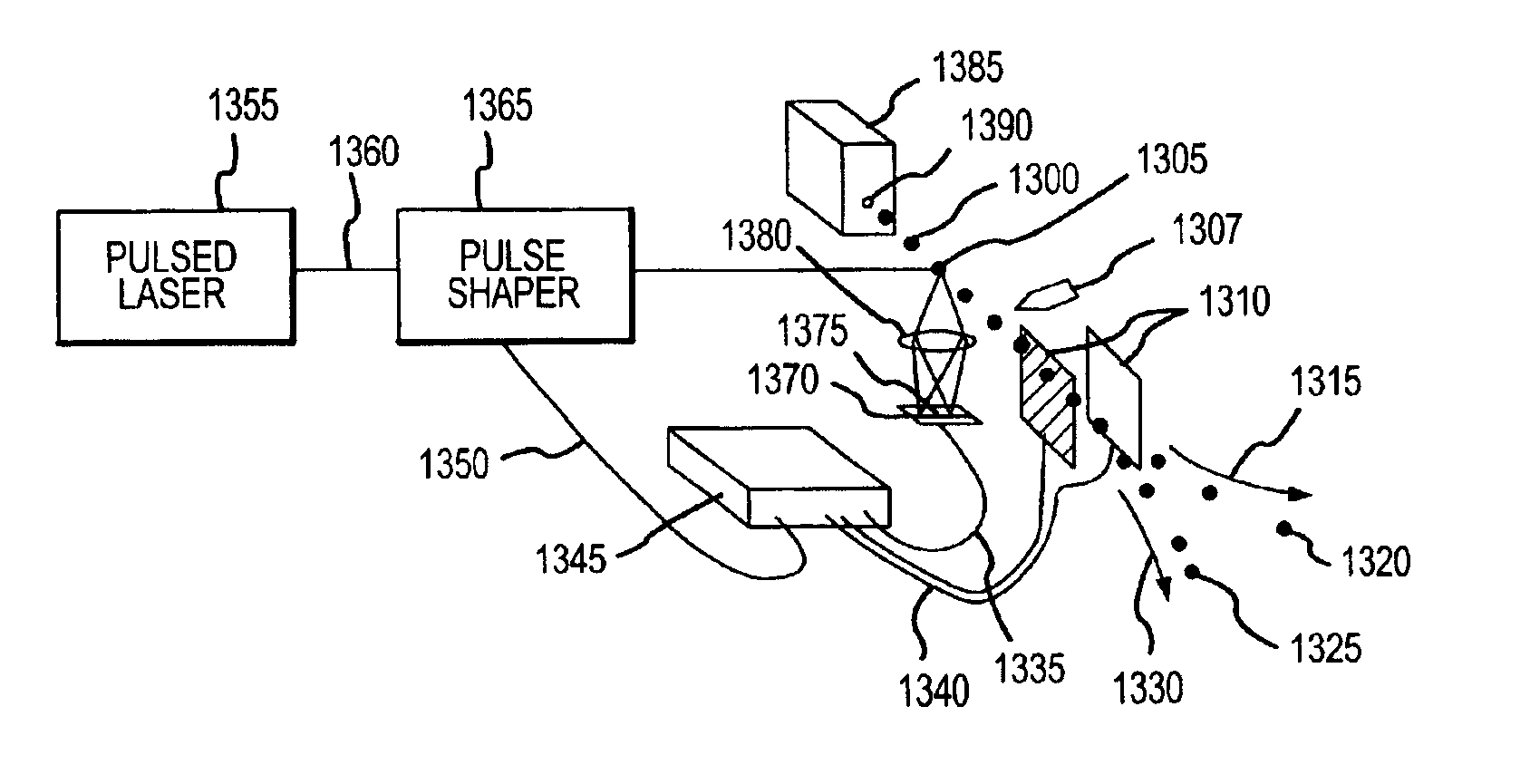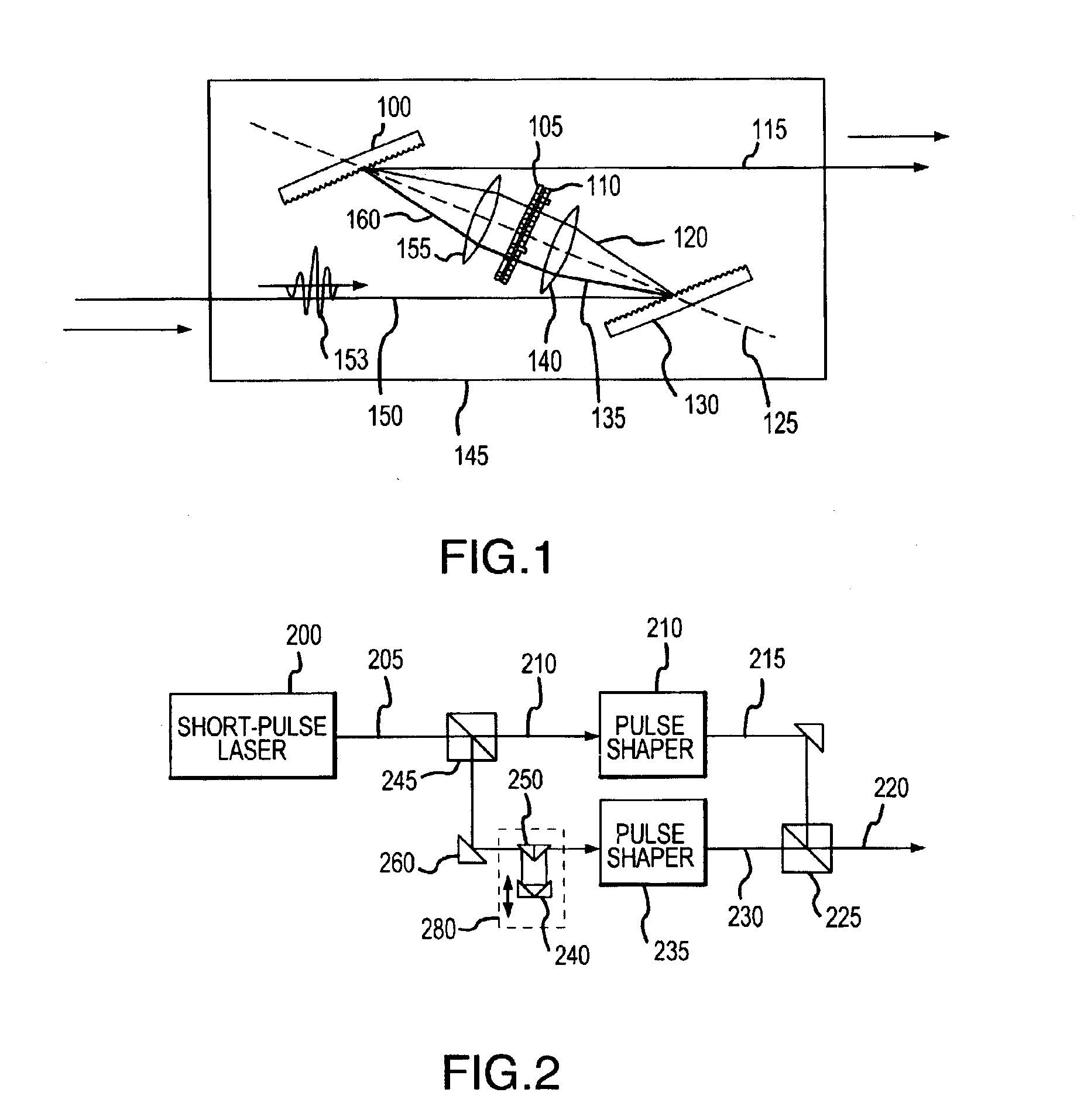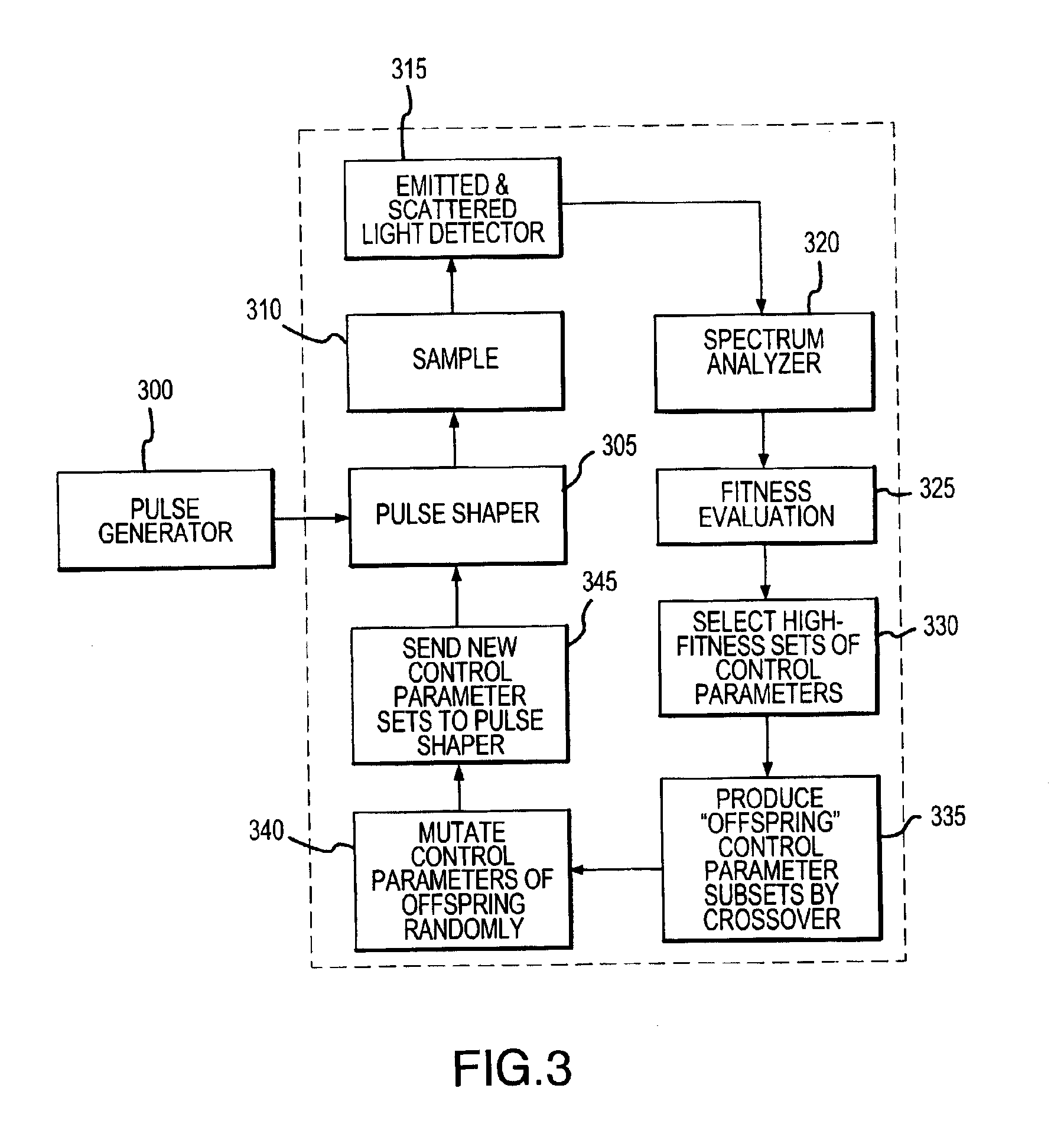Quantum resonance analytical instrument
a quantitative resonance and analytical instrument technology, applied in instruments, optical radiation measurement, interferometric spectrometry, etc., can solve the problem of prior art in which shaped pulses have been used to recognize, identify or detect specific molecules or substances
- Summary
- Abstract
- Description
- Claims
- Application Information
AI Technical Summary
Problems solved by technology
Method used
Image
Examples
embodiment
[0054 #3: Scanning Near-Field Optical Probe Microscope
[0055]As shown in FIG. 4, a shaped pulse of light may be coupled into an optical fiber 490 and thence into the optics 455, 460 of a near-field scanning optical probe microscope 450. Scattered light from the pulse and fluorescent light stimulated by the pulse may be gathered either by the optical fiber 447 or by other means such as a microscope objective and analyzed with respect to spectrum, polarization and phase by means of a spectrometer or time-resolved spectrometer and other suitable optics 435. Phase analysis requires interfering the gathered light with a portion of the original pulse and examining the position of fringes in the interference pattern. Scattered light may be analyzed for features in the absorption spectrum, while emitted fluorescent light may be analyzed for features in the emission spectrum. Any particular substance at the locus of the evanescent light field from the tip of the microscope probe will be coher...
PUM
| Property | Measurement | Unit |
|---|---|---|
| diameter | aaaaa | aaaaa |
| phase | aaaaa | aaaaa |
| magnetic field | aaaaa | aaaaa |
Abstract
Description
Claims
Application Information
 Login to View More
Login to View More - R&D
- Intellectual Property
- Life Sciences
- Materials
- Tech Scout
- Unparalleled Data Quality
- Higher Quality Content
- 60% Fewer Hallucinations
Browse by: Latest US Patents, China's latest patents, Technical Efficacy Thesaurus, Application Domain, Technology Topic, Popular Technical Reports.
© 2025 PatSnap. All rights reserved.Legal|Privacy policy|Modern Slavery Act Transparency Statement|Sitemap|About US| Contact US: help@patsnap.com



